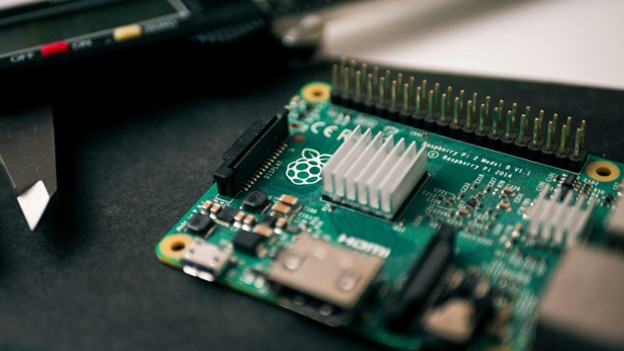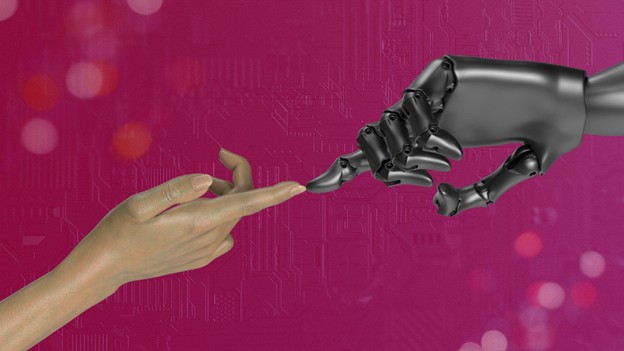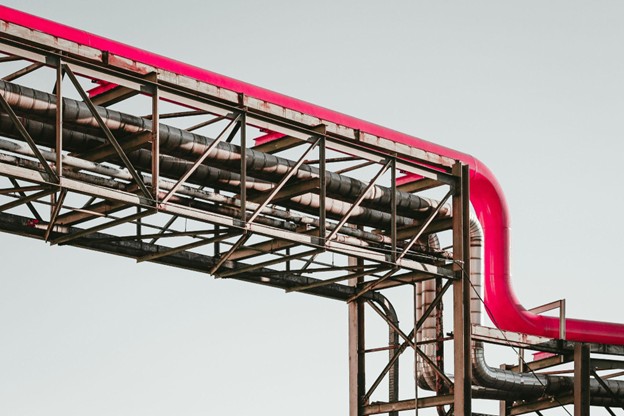AI and IoT are increasingly paired together in the quest to manage large data volumes, and businesses gained the ability to develop
design and engineering projects and IoT devices a lot faster over the last couple of years as AI has matured. How can artificial intelligence (AI) and internet of things (IoT) work together in
AI engineering projects improve the development of IoT devices?
This happens through the processing of big data being generated by IoT devices. The big data generated is generally measurements from sensors and signals between devices that provides intelligence at the edge. Today, edge computing technology enables smart edge devices to manage some of this data. And AI is now a part of that paradigm.
Combining AI and IoT, engineers can transform their raw data into actionable insights, easily optimizing the whole product development process. This is done through AI tools such as NVIDIA Jetson Platform1, or the engineer writing their own Matlab script. The Matlab script would need to receive the data from the IoT device being developed, using communication protocols (MQTT, Zigbee, LoRa, etc), and process the data in real-time2 3 4.
The sensors and cameras collect the data and send it to a small, powerful computer with embedded AI, to perform edge computing. These devices include the NVIDIA Jetson Nano, Google Coral6 Edge TPU, or Raspberry Pi running TensorFlow Lite for edge AI applications.

5 Ways AI Supports the Development of IoT Devices
As IoT systems continue to evolve, they generate more and more data, which is great for developers. More data means that engineers have more insights than ever before. However, extracting useful information and managing these large amounts of data becomes challenging for the human mind.
Although IoT development kits support developers aiming for rapid development, the end result yields much higher quality projects in less time through the utilization of AI in the development process. For instance, combining an IoT development kit with an AI tool like Google’s AutoML Vision7 can enable engineers to rapidly train image recognition models for smart cameras, dramatically improving the accuracy and speed of development compared to manual coding.
Learn about AI and machine learning
To get the most out of the AI tools’ potential, engineers need to provide the AI tools with large amounts of data. The more data that the algorithm is exposed to, the more accurate their future predictions become. The success of the AI models is dependent on the quantity and quality of the data that they analyze.8
The AI algorithms make sense of big data in a way that a computer would but significantly faster.
Predictive Insights
AI excels in processing large amounts of data and making sense of complex patterns which humans might not see, which is a key use case for IoT devices in predictive maintenance use cases. IoT devices generate huge amounts of raw data from various sensors that needs to be processed for actionable insights.9
AI quickly extracts valuable insights, detects patterns and makes predictions of a device’s future behavior by performing real-time data analysis. This enables engineers to make more informed and responsive decisions.
These insights are important during the commissioning and testing stage of the development process. Understanding real-time conditions helps to optimize and improve the device's performance.
Additionally, the AI driven predictions allow for proactive decision-making, reducing the likelihood of costly failures and enhancing overall system reliability.
Using vibration sensors like MEMS accelerometers to discover wear and tear in a motor is a practical example of where predictive insight can be used. As a motor wears out over time, its performance declines, and abnormal vibrations can occur.
These can lead to costly system damage if undetected and the system goes without maintenance. AI process sensor data in real-time is immediately picking up on the anomaly. With a quick alert to the technician, the motor can be exchanged for a new one before any lasting damage has been done to the system.10

Machine Learning for Optimization
Machine learning algorithms process vast amounts of data collected from IoT sensors. They identify patterns and trends that would be impossible for humans to detect manually.
However, the data analytics performed by AI would be worth little with poor data or using subpar machine learning models. This brings up the question of how to get high quality data.
The engineer needs to plan for high quality data before they start gathering training data. Engineers ensure high quality data by11:
- Establishing data quality standards
- Utilizing data quality tools12 such as IBM Infosphere Quality Stage13
- Ensuring accurate data labeling for supervised learning tasks such as classification
- Ensuring the data is relevant to the AI models use
- Collaborating with reputable and reliable data providers
- Implementing continuous monitoring of the data to find any issues as early as possible
The valuable insights gained from these algorithms help organizations make decisions, streamline processes, and enhance overall performance of the AI and IoT projects.

Anomaly Detection
When machine sensors collect data continuously, they generate large amounts of data. Within all that data, subtle anomalies can be a sign of an issue or opportunity.
AI, particularly generative AI models, are very good at finding these irregularities. AI can spot deviations that would go unnoticed by humans, through analyzing patterns and comparing them with historical data. This allows businesses to extract insights and act on them before small issues become big problems, saving them from costly failures.
For instance, in a manufacturing plant, where industrial automation equipment runs continuously, the anomalies that go undetected can cause operational disruptions, increased maintenance costs and safety risks to the employees.
Harness Edge Computing with Digi's Industry 4.0 Solutions
Learn more about Industry 4.0 and Edge Computing with our Industry 4.0 eBook
Download PDF
However, using the right sensors and an edge computing device, the embedded AI tasked with processing all the sensor data, could detect a subtle shift in the data and flag it as an anomaly.
These subtle changes that are unlikely to be detected by a human eye include14:
- Subtle sensor drift, lowering the quality of data being read by the sensor
- Environmental variations, such as increased humidity, temperature and pressure, could cause drastic changes of the quality of product being produced in the manufacturing plant
- Behavioral anomalies. Equipment may show an operational change in behavior due to natural wear and tear over time. AI can pick up on these changes, and flag the equipment down for maintenance
Predictive Maintenance
Integrating AI into IoT networks, city infrastructure, and building management systems can monitor equipment or infrastructure health in real time. AI analyzes data from sensors to detect patterns and predict when maintenance is needed, reducing the chance of unexpected failures.
For example, STMicroelectronics has developed a Microelectromechanical systems (MEMS) sensor with an embedded intelligent sensor processing unit (ISPU) that can be integrated into edge AI computing to detect low power anomalies15. This allows the maintenance engineer to track the health of fans used in air conditioning units and immediately come and fix them when an anomaly is detected.
Proactive approaches like this one mean smart environments run more smoothly, with fewer disruptions and better overall efficiency.
Predictive maintenance can be vital in the validation (testing) phase of development. Developers can choose a different solution if needed, by recording how long it takes for maintenance to become necessary.

Resource Optimization
AI algorithms analyze data from IoT sensors to make intelligent decisions. For example, in energy management, AI can analyze energy consumption patterns to find inefficiencies.
Engineers can then analyze these inefficiencies and start working on solutions that will make the design more efficient and reduce cost. Additionally, AI can suggest changes to reduce waste and improve overall efficiency by understanding the energy consumption patterns.
This proactive approach to resource allocation means that the company uses less energy, produces less waste and reduces production costs. AI makes real-time recommendations, adapts to changes and continuously improves resource management.
In the development process, recourse optimization can significantly reduce the costs of the project. Just about every development team can benefit from this.
Things to Consider When Using AI to Develop IoT Devices
Using AI in IoT devices requires planning and execution. While the benefits are big, there are several key considerations to make sure that the AI-enabled IoT devices are effective and reliable.
The considerations when using AI to support IoT development include:
- Data management: Manage and process massive amounts of data from IoT devices
- Cybersecurity: Secure the data and prevent unauthorized access
- Interoperability: Make sure AI in IoT devices works with other systems and technologies
- Cost: Consider the cost of AI and weigh it against the benefits
- Hardware: Choose the right hardware to support AI and IoT
- Application integration: Integrate AI into existing applications to improve functionality and performance
- Long-term: Plan for the future and consider the sustainability and scalability of AI and IoT

IoT and AI FAQs
How Does AI Work in Smart Devices?
AI makes smart devices smart by allowing them to do tasks autonomously and make intelligent decisions. For example, in self-driving cars, AI processes massive amounts of data from sensors and cameras to navigate roads safely and efficiently.
This involves real-time data exchange between the car’s systems to respond to traffic conditions, obstacles, and driver input. Similarly in other smart devices, AI analyzes IoT data to optimize performance, predict maintenance needs, and personalize user experience.
What Is the AI and IoT synergy?
Synergy is the interaction and cooperation of 2 or more agents (AI and IoT technologies), to create something greater than themselves.
In this case, the synergy between IoT and AI greatly amplifies the capabilities of connected devices.
IoT data is massive and overwhelming on its own but when combined with the processing speed of AI, this data becomes actionable.
AI algorithms analyze this data to provide insights that can be used to implement proactive risk mitigation. So AI doesn’t just manage the data, it interprets it to predict and address issues before they become problems.
IoT systems become smarter, more efficient, and better at anticipating and responding to changes in their environment when they are combined with AI.
How Can IoT, Big Data, and AI Solve Real-world Problems?
IoT networks, big data, and AI are powerful tools that, when combined, can solve many real-world problems. In supply chains, for instance, IoT devices track goods in real-time and generate massive amounts of data.
The AI model processes the big data to predict delays, optimize routes, and manage inventory better. AI can also analyze the video streams from security cameras to improve safety and monitor for issues.
Businesses can not only improve efficiency, but also gain actionable insights to address problems proactively, and make informed decisions by leveraging these technologies together.
Next Steps
About the Author
 Hans Tschohl is a mechatronics engineer with extensive experience in designing, building, and commissioning IoT devices. When he's not optimizing IoT systems with AI, you’ll find him tinkering in his private workshop, always working on his next big project. Hans believes the future of technology lies in the seamless integration of AI and IoT.
Hans Tschohl is a mechatronics engineer with extensive experience in designing, building, and commissioning IoT devices. When he's not optimizing IoT systems with AI, you’ll find him tinkering in his private workshop, always working on his next big project. Hans believes the future of technology lies in the seamless integration of AI and IoT.
References
1) NVIDIA: Autonomous Machines
2) Mathworks: Data Processing and Visualization
3) Mathworks: Predictive Modeling
4) Mathworks: Get Started with MQTT
5) NVIDIA: Jetson Nano
6) Coral: Products
7) Google: AutoML
8) Forbes: Data Quality for Good AI Outcomes
9) Webby Lab: Use Cases of IoT-based Predictive Maintenance
10) Energy Robotics: Role of AI in Data Processing
11) AIMultiple Research: Guide to AI Data Collection Quality Assurance
12) IBM: InfoSphere QualityStage
13) RWS: Ensuring High Quality AI
14) Idea Usher: AI for Anomaly Detection
15) STMicroelectronics: Low-power Anomaly Detection